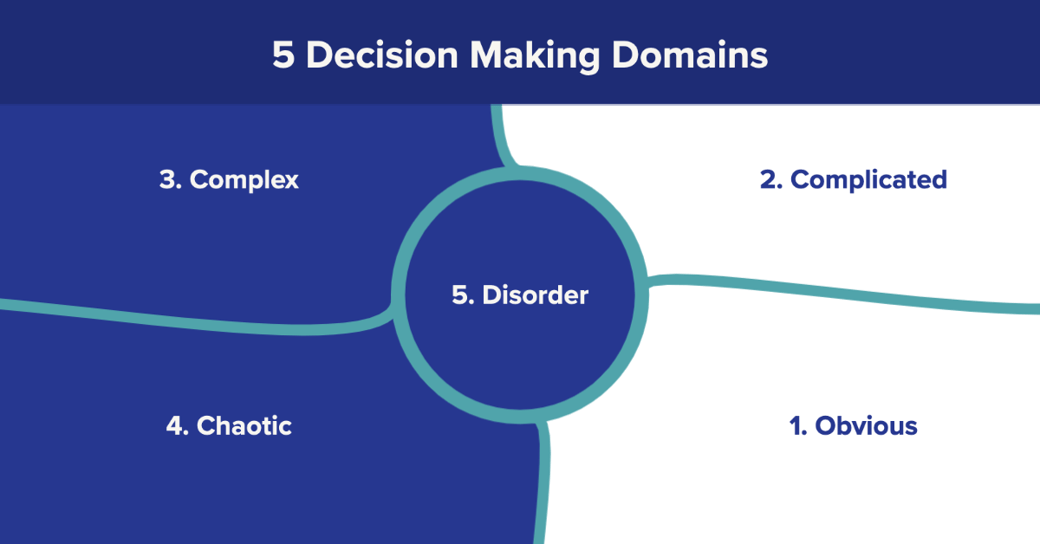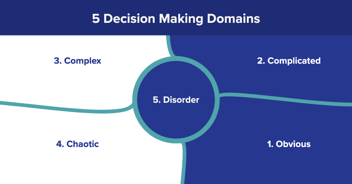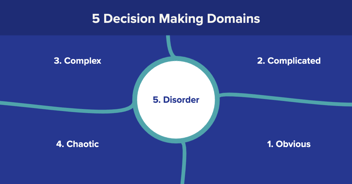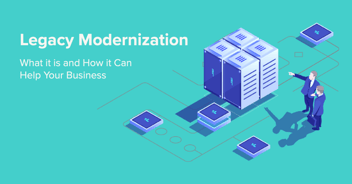Insights
Is AI the Right Solution to Your Business Problem? Part 1
This blog post is the first in a three-part series on matching the correct solution to your business problem.
Are you killing a fly with a hammer?
In 2021, solving the business problem front and center has never been more critical. Management and leadership are facing, in the age of VUCA—volatility, uncertainly, complexity, and ambiguity—increasingly unpredictable situations and problems. Many managers and leaders rely on a tried-and-true approach to problem-solving, which may not adapt effectively when circumstances change. Consequently, the rules of thumb that managers and leaders rely on when new situations emerge may prove inadequate.
Emerging technologies such as AI and machine learning currently hold great promise. These and related technologies offer the possibility of solving business problems thought to be elusive for centuries. While many experts agree on using these exciting, advanced technologies, the question remains whether they should use them in every situation. Instead, as one of my mathematics mentors would say, could a seemingly complex problem be broken down into simpler pieces and solved separately? Does this problem remind you of another one you solved before? Have you resolved a similar situation? Or are you unwittingly planning to use the “hammer” of AI and machine learning to kill a problem, metaphorically speaking, the size of a fly?
How can business problems be classified?
One approach to figuring out if you need AI or machine learning is to see if you can classify your business problem according to its complexity. One popular system to achieve this is the Cynefin framework, created more than 20 years ago by David Snowden. Cynefin, pronounced “kuh-NEV-in,” is Welsh for “habitat.” The framework suggests business problems can be classified into one of five problem types, as shown in the table below. Snowden’s framework allows managers and leaders to broaden their traditional approaches based on complexity science.
| Problem Type | Domain |
Example |
| Obvious (clear or simple) | Best Practice | Accounting |
| Complicated | Expert | Decision Support Systems |
| Complex | Emergence | Predicting Stick Prices |
| Chaotic | Rapid Response | Threat Analysis and Protection |
| Disorder | Lack of clarity—gather more information | Any problem not readily categorized into the other four |
Obvious business problems
In the 21st century, many of the so-called obvious business problems, like those in the accounting and related domains, are solved by employing what are usually considered to be best practices. These practices typically are agreed upon and well-established within the professional community and society at large. In Snowden’s framework, the terms simple and clear recently replaced the term “obvious.” Problems with simple or clear solutions fall into this category. The constraints on these problems are typically very tight. Some refer to this domain as the one consisting of “known knowns.”
Typically, all the involved parties share the same understanding of the problem, hence using the term “obvious” to describe it. Examples include order processing and fulfillment, as these are areas subject to a minor amount of change if any. When faced with an obvious problem, managers can sense, categorize, and respond based on established practices in the field. Moreover, employees and managers will have access to the needed information for solving the problem. Command-and-control styles of problem-solving work well for such types of problems. Since problem and solution are obvious, little if any communication between employees and managers is needed. There tends to be an agreement by all involved parties around what to do.
Nevertheless, even with so-called obvious problems, managers can make mistakes. Perhaps the problem has been oversimplified and categorized as obvious when it isn’t. When managers require oversimplified information and answers, they sometimes risk forcing a more complicated issue into looking like an obvious one. Entrained thinking on the part of leadership may blind them to appropriately considering new ways of thinking. When problems seem to have obvious solutions, managers risk becoming complacent, missing contextual changes, and reacting too late. As a result, an obvious problem may devolve quickly into a disordered one.
Complicated business problems
In contrast, complicated business problems often require people with different subject matter expertise levels to pool their knowledge and develop a solution for each part of the issue. The parable of the blind men and the elephant comes to mind. Simple and complicated problems are considered to be relatively orderly ones in the grand scheme of things.
Complicated business problems often have multiple correct solutions—falling into the category of “known unknowns.” Leadership requires expertise to sense, analyze, and respond to such issues. A common example might be the necessary diagnostic work to identify the problem when your car breaks down. Good practice—choosing from options A, B, or C—is appropriate. You can use this domain for, say, choosing which cell phone plan to purchase. Another example comes from the world of mining and drilling for oil. With decades of domain knowledge, the subject matter experts know with greater certainty where to drill next. Their analysis is complicated and complex, and their knowledge is often tacit information.
Entrained thinking may also be a danger in complicated contexts. In such situations, it’s the experts who are more prone to such errors rather than managers. Leaders will do well to listen to both experts and novel ideas from other sources. Analysis-to-paralysis is also a frequently encountered problem in this domain. The use of games and work in unfamiliar environments will help both managers and experts be more creative when making decisions. Such approaches encourage the necessary balance of experimentation and subject matter expertise. While such problems can take a good deal of time to solve in this domain, the trade-off between just making a decision quickly and taking the necessary time to identify the correct answer remains.
In part two of this series, we will discuss the complex and chaotic domains.
What kind of business problem do you have?
Understanding the type of business problem you have is only the first step. Contact our team to help decide if AI and machine learning are needed to solve your business’s issues.



